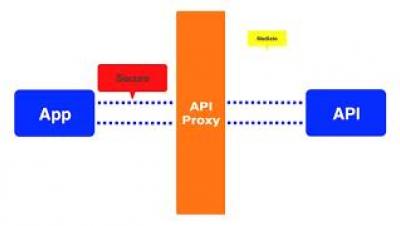Systems | Development | Analytics | API | Testing
%term
Multi-cloud & Augmented Intelligence - Setting the Stage for Qlik's Transformation to SaaS
Today at Qonnections we outlined new innovations in multi-cloud and augmented intelligence that are setting the stage for Qlik as the leading platform for SaaS-based analytics. Leveraging our unique Associative Difference and Kubernetes-based architecture, Qlik is now able to deliver the full Qlik Sense Enterprise product on Qlik Cloud Services.
Qlik Enhances Customer Success Offerings to Drive Analytics Adoption and Value
Qlik has been hard at work the past year transforming its customer success and support organization to truly align with customer needs in a SaaS first world. Today at Qonnections we announced a series of enhancements that put the customer at the center of everything we do at Qlik.
How DreamFactory can help your business (90-sec)
The Fundamentals of Data Governance - Part 2
In part 1 of my post on data governance fundamentals, I introduced the "5 Ws and 1 H" of problem-solving—"What”, “Why”, “Who”, “When”, “Where”, and “How”— and applied the first three to data governance. This part covers how you can apply the last three pieces and suggest some next steps. Let's get started!
Augmented analytics lets smart analysts jump to conclusions
Jumping to conclusions has always been considered a bad way to do business (and most things in life). It implies making a rash, poorly considered decision without the facts and without an understanding of the wider implications associated with that decision. But there’s a new wave of technology that is changing everything.
Why every software application you're building needs embedded analytics
Recently, I read an article by Jill Dyché which was a wrap-up of TDWI Las Vegas. She talked about speaking to an analytics professional who works for a bank and was building analytics on top of their applications. This comment really struck me because it means the bank’s software vendor is missing out on a great opportunity to create an enormous amount of value for their customer and their own business.
Yellowfin Signals: Discovering Critical Changes in Google Analytics data
In October 2018, we launched two new products into the Yellowfin Suite: Signals, an automated discovery product that discovers critical changes in your data as they happen, and Stories, a data storytelling product which enables users to provide better context to the numbers and create a common, consistent understanding across the organization. What did we do next? Drink our own champagne, of course.
How We Moved from Heroku to Google Kubernetes Engine
In my last post I laid out our reasoning for moving from Heroku to Google Kubernetes Engine (GKE) and other GCP services. Now I'll describe the actual migration process in detail. This isn't designed as a how-to guide for migrating from Heroku to GKE—Google has their own excellent tutorial for that—but rather a description of some of the challenges of migrating real-world production applications and how we overcame them.








